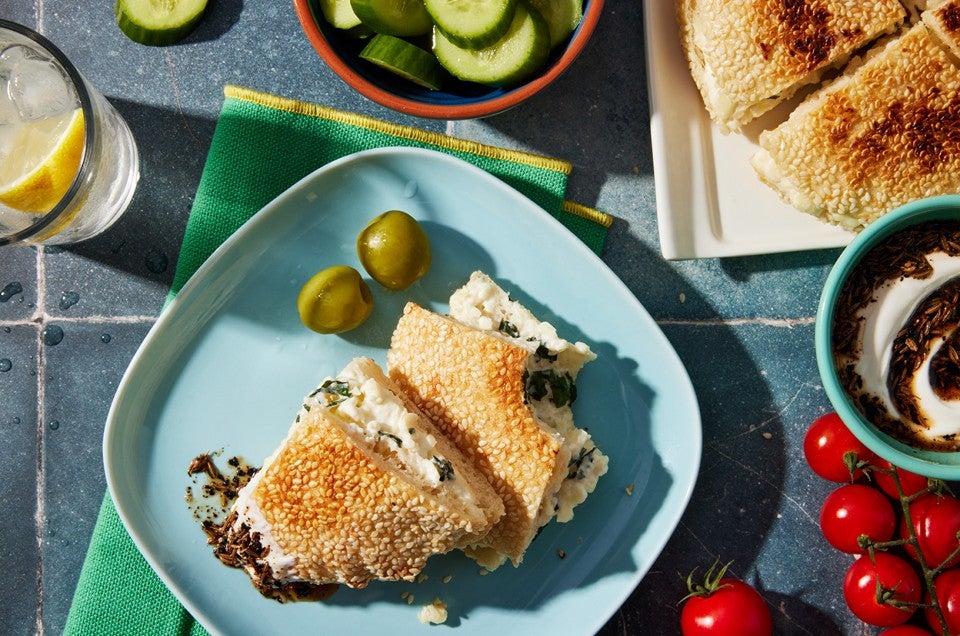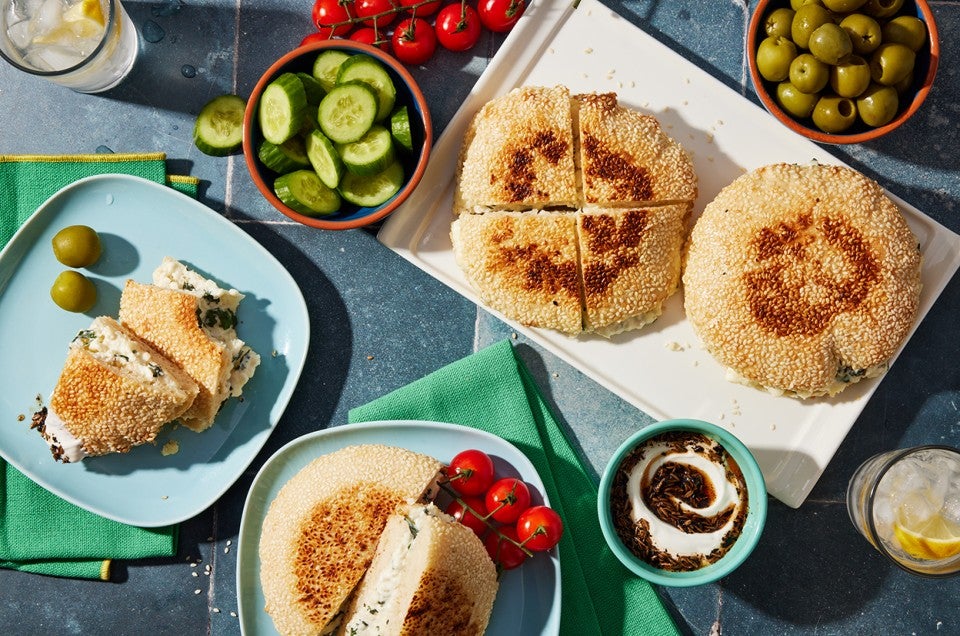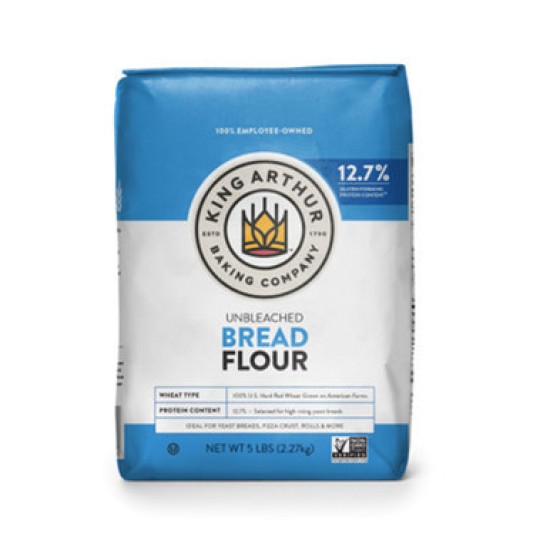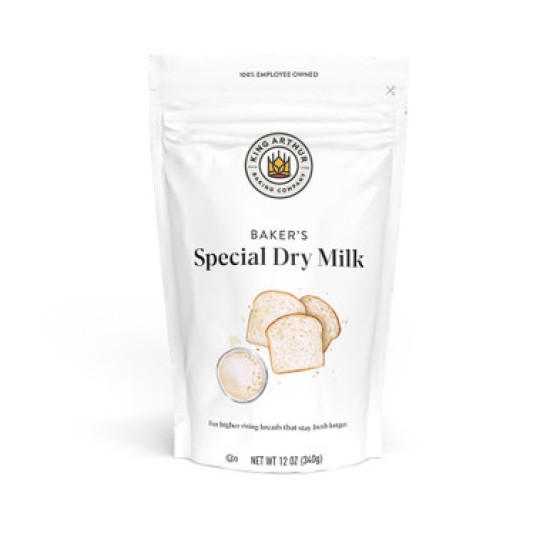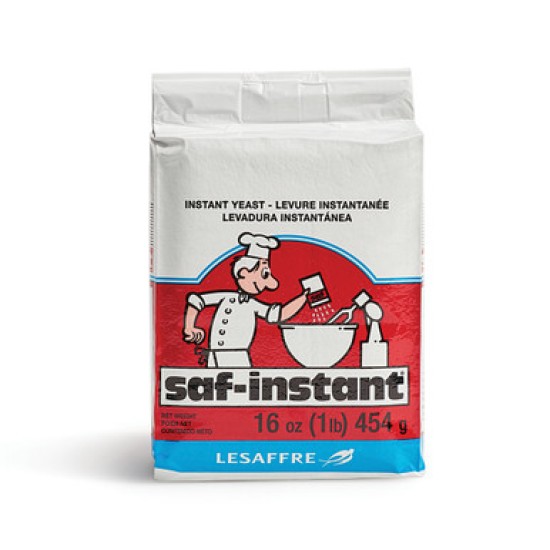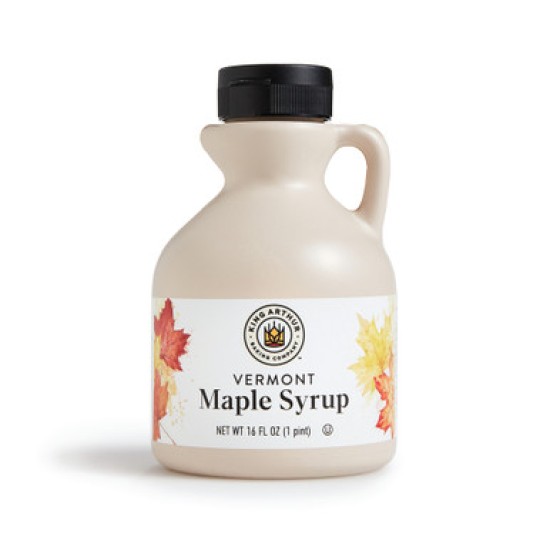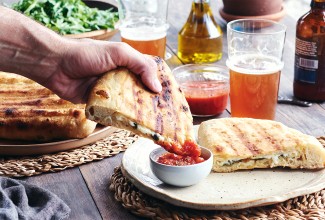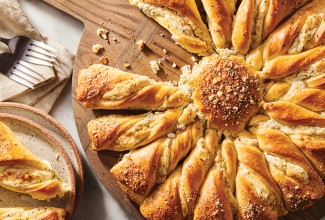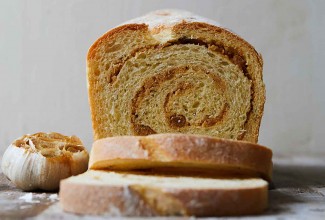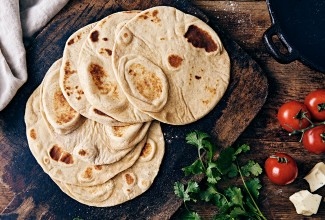-
To make the dough: Weigh your flour; or measure it by gently spooning it into a cup, then sweeping off any excess. In the bowl of a stand mixer fitted with the dough hook, combine the flour, milk powder, sugar, yeast, and salt. Mix on medium speed for 1 minute to combine. With the mixer running, stream in the water. Knead on medium speed for 7 minutes, or until the dough is smooth and slightly sticky. Use floured hands to gather the dough into a round and lightly flour the bottom and sides of the bowl. Return the dough to the bowl and lightly flour the top. Cover the bowl with plastic wrap or your favorite reusable wrap and let it rise in a warm place for 1 hour.
-
Preheat the oven to 475°F.
-
Lightly flour a clean work surface and divide the dough into 6 pieces (about 140g each). Roll each piece into a ball, cover with a clean, damp kitchen towel, and let them rest for 10 minutes. Meanwhile, gather a medium bowl of water and 3 pieces of parchment. Put the sesame seeds into a medium baking dish.
-
Dip your hands into the water and wet the outside of 1 ball of dough, then dip it into the sesame seeds to completely coat. Transfer to a piece of parchment and repeat with the remaining dough so that you have 2 pieces of dough per sheet of parchment.
-
Use a rolling pin to roll out each piece, directly on the parchment, into a roughly 6" round. Cover with plastic wrap or clean, damp kitchen towels and let them rest for another 10 minutes.
-
Transfer one sheet of parchment (with 2 pieces of dough) to a large baking sheet. Bake the ka’ak, one baking sheet at a time, for 6 minutes, until they’re puffed and lightly browned. Set aside to cool as you bake the remaining ka’ak.
-
To make the filling and seedy mix: In separate small bowls, mix together all of the ingredients for each component.
-
Once the ka’ak have cooled, use a serrated knife to cut each in half horizontally so that you have 2 rounds. Divide the cheese mixture among the bottom halves, then return the top halves so that the filling is sandwiched between the 2 pieces of bread.
-
Heat a medium skillet over medium heat. Lightly brush each side of one ka’ak with olive oil and toast for 2 to 3 minutes, pressing down with a spatula. Once nicely golden and toasted, turn it over and toast the other side for another 2 to 3 minutes, pressing again. Keep warm under foil while you repeat with the rest of the ka’ak.
-
Cut the toasted ka’ak into halves or quarters and serve on a large platter with the seedy mix to dip. Serve warm or at room temperature.
-
Storage information: Store the baked ka’ak airtight at room temperature, and the filling mixture airtight in the refrigerator, for up to 2 days. Stuff and griddle right before serving.
